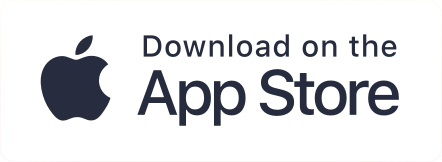Hard forks are a tool that cryptocurrency developers and communities can use to make changes and modifications to blockchains.
Since blockchains themselves are designed to be immutable, or uneditable, the only way to change how a blockchain will work is to set new rules for the future and then see if those rules are adopted by the community.
Community adoption in the blockchain world means that the nodes (or individual machines that are connected to a blockchain’s network and used to verify transactions) or miners (specialized computers competing to complete transactions) will start confirming transactions on the new version of the blockchain.
The easiest way to think about cryptocurrency forks (the Bitcoin hard fork last year was one extremely notable fork, as was the earlier Ethereum fork) is as a software update.
Sometimes the updates are minor code changes or bug fixes known as soft forks. In cases of soft forks, the underlying blockchain remains intact and miners and nodes just update with the newest version and then keep moving.
Other times, the forks are more like operating system upgrades and they are called hard forks. There are a few possible outcomes of a hard fork, but occasionally, like in the case of the Bitcoin hard fork and the Ethereum hard fork, the updates can result in two different blockchains, and as a result, create new currencies.
In the case of the Bitcoin hard fork, the creation of a new chain resulted in the creation of Bitcoin Cash. In the case of the Ethereum hard fork, the new blockchain became the main Ethereum chain, while the legacy blockchain became known as Ethereum Classic.
Hard forks can be as much a governance tool for blockchain as they are a method of updating software.
The process of a hard fork gives community members and supporters of cryptocurrencies systems the opportunity to make influential decisions about the technical and operating procedures of the blockchain, which could ultimately affect how the economy develops around the chain’s cryptocurrencies.
Bitcoin hard fork and Ethereum hard fork: A couple examples from previous forks
Ethereum has forked several times since it was first launched on July 30, 2015.
But Ethereum’s most contentious fork, which resulted in the creation of Ethereum Classic, happened on October 25, 2016. The hard fork followed a debate in the Ethereum community about the best way to handle a hack and theft of approximately $50 million from a decentralized organization called the DAO on June 17, 2016. (Check out this story for more on the DAO).
The Ethereum community was split because there was a loophole in the DAO’s code that essentially delayed the hack. That meant that the community could vote to backtrack the blockchain and undo the transactions that made the hack possible and restore the funds back to the DAO.
But blockchains are supposed to be immutable, or uneditable, so reversing a chain’s transaction history struck some members of the community as potentially damaging. Others thought that not reversing the DAO heist would also be damaging, especially since Ethereum launched only months prior.
In the end, Ethereum was forked. The new chain, which was edited to undo the DAO hack, is known as Ethereum. The legacy chain is now known as Ethereum Classic.
The Bitcoin/Bitcoin Cash hard fork, which happened on August 1, 2017, is another example of a contentious hard fork that resulted in two different currencies. Following a long-standing debate about whether to increase Bitcoin’s block size, and if so, how, members of the community used a hard fork to split Bitcoin Cash from Bitcoin.
Bitcoin Cash was created to increase the block size to eight megabytes from one megabyte. Those arguing for Bitcoin Cash were able to get enough support from miners and Bitcoin nodes for the chain to be supported and become operational as an alternative to Bitcoin.
Post hard fork, the bitcoin community used a soft fork to implement SegWit or Segregated Witness, which made changes to Bitcoin’s transaction format to increase transaction speed without having to alter block size.
Forks matter
So, to sum this all up, forks are an important part of how cryptocurrencies work. Forks can range from routine updates to contentious, code altering affairs.
One key takeaway is that forks are a governance tool that allows cryptocurrency communities to decide on major changes to the underlying infrastructure and for the supporting communities to have some kind of voice in what kinds of decisions are supported.
About Abra
Established in 2014, Abra is on a mission to create a simple and honest platform that enables millions of cryptocurrency holders to maximize the potential of their assets. Abra enables both individuals and businesses to safely and securely buy, trade, and borrow against cryptocurrencies – all in one place. Abra’s vision is an open, global financial system that is easily accessible to everyone.
Why Abra
Based in the United States, Abra is available in over 150 countries and makes it easy to convert between crypto and a wide variety of local fiat currencies. With over 2MM customers, $7B in transactions processed, and $1.5B in assets under management, Abra continues to grow rapidly. Abra is widely loved and trusted – in April 2022, pymnts.com reviewed and rated Abra amongst the top 5 most popular crypto wallets in the market. Abra is backed by top-tier investors such as American Express Ventures and First Round Capital.
How Abra Protects Your Funds
Abra places clients’ financial objectives and security first. Abra practices a culture of risk management across all levels and functions within the organization.
Abra employs a state-of-the-art enterprise risk management framework that comprises a comprehensive set of policies, procedures, and practices detailing all applicable risk-related objectives and constraints for the entirety of the business. Abra has instituted a complete set of requisite systems and controls that continuously enforce these policies, procedures, and practices to manage all operations, including credit and lending. Abra’s independent Risk Committee comprises experienced compliance, risk, securities, and fraud operations professionals with backgrounds in industries ranging from traditional and digital assets banking, payments, remittance, to fintech.
Please visit our FAQ to learn more.



